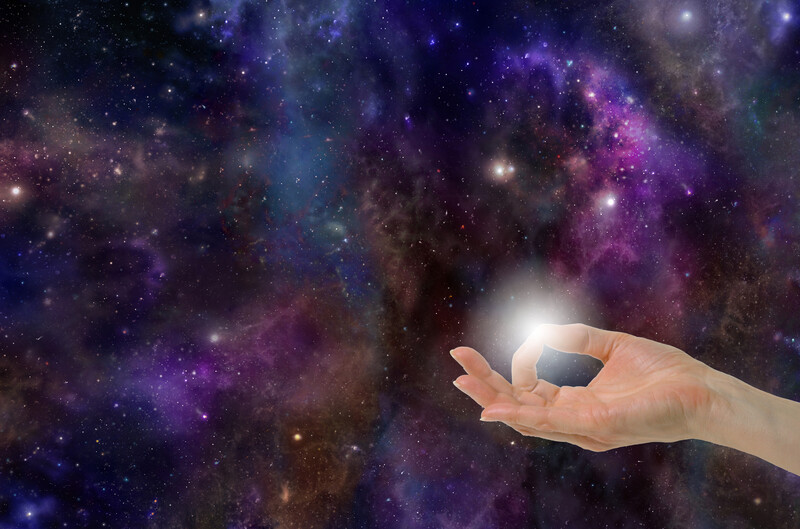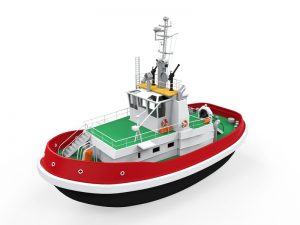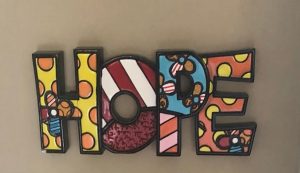25 Years in the After
Lynda Boucugnani-Whitehead, Ph.D
Over the years I have written articles and speeches trying to help others who are experiencing grief, especially the loss of a child. As a professional psychologist, I also wanted to help other professionals understand what helps and what doesn’t help as they make attempts to assist those experiencing a profound loss. The first article, A Grief Shared, was written five years after Maria-Victoria died, just shortly after 9/11. There were others at different time intervals with varying purposes in my mind. The last was after 15 years. Today, I am writing after 25 years of living this life. My purpose is to try to put in words what those 25 years have done to me, my relationship with others, to describe what it feels like to live with this profound grief and how I have changed. There is no doubt that such a loss will affect the soul, the mind, one’s sense of self, one’s belief systems including evaluation of what is important and what is not important in this world. I believe this will resonate with others – but not with all since we all find different ways to live these years in the “after”. Those who have experienced such profound loss know that there are two divisions in their lives: the before and the after.
So, what does it feel like after all this time? I must first tell you that it has gone very quickly and that was a surprise, because initially I thought, “how can I live without my daughter”; “how can I live without our future together”. I wanted to be with her, but I didn’t want to leave my son or be the cause of grief to anyone. In previous articles I have described what earlier grief/loss feels like, so I won’t repeat that. But the long-term grief – which changes your body, mind and soul is different. It is very hard to find a metaphor to express this accumulation of years of grief, but one is really needed.
The Little Red and White Tugboat
There once was a little tugboat, who thought of herself as mighty and strong, painted in pleasing colors of red and white. She was proud that she had a big responsibility in the harbor making sure that other boats were safe and could move and navigate with ease. Her steering wheel was her confidence and sense of self, her compass kept her on the right path, morally, spiritually and in relation to other boats. The engine was her brain and relied upon fuel and proper care to continue to function as a brain should. The Little Tugboat’s anchor was a weight that could hold her steady but could also send her adrift if not properly maneuvered. The most important part of the little tugboat was her cabin home where her children thrived and with wide eyes were learning all they could about navigating the seas of life. This was the heart and soul of the tugboat, the very reason for living. One day just after the little tug had finished pulling a large ship through the harbor, the Earth quaked and an enormous wave came crashing down and totally destroyed the part of the cabin where her daughter was. This was the beginning of the second part of the tugboat’s life – The After.
At the beginning of the “after”, all aspects of the tugboat are affected. The steering wheel no longer works properly, the compass is out of whack – searching for some kind of equilibrium. The anchor cannot be found and the engine brain is so damaged it cannot produce any power, nor is there any fuel. The heart and soul of our tugboat self will sometimes seem destroyed and will always be permanently altered. However, the heart and soul can also grow.
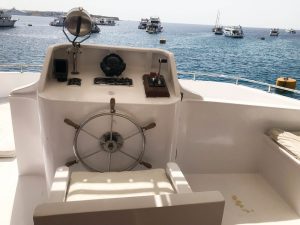 For the first five years in the after, one experiences the enormity of the catastrophe. It is so hard at this time. One tries to just live – as thoughts of such despair can pull you down to where you don’t want to go. The anchor has landed directly on your chest and that weight will never leave you, even after 25 years. It is much lighter now and other anchors have emerged to steady your boat body to keep you upright and seaworthy. These have been accompanied by life-savers of various different kinds.
For the first five years in the after, one experiences the enormity of the catastrophe. It is so hard at this time. One tries to just live – as thoughts of such despair can pull you down to where you don’t want to go. The anchor has landed directly on your chest and that weight will never leave you, even after 25 years. It is much lighter now and other anchors have emerged to steady your boat body to keep you upright and seaworthy. These have been accompanied by life-savers of various different kinds.
In my case one anchor was Compassionate Friends, a group dedicated to helping parents who have lost a child. Specific personal friends were also life savers – these were friends who could get over their own discomfort and fears in discussing my daughter and had come to realize that talking about her and hearing her name, Maria-Victoria, is like the sun shining brightly on the Earth. There will not be a lot of these friends, but one or two can be true life savers in the “after”.
Perhaps, the biggest combination anchor and life saver for me was recognizing the value and importance of “reframing” and making a conscious decision about my relationship with my daughter. It may have been easier for me to do this since I am a psychologist and much of therapy is based upon this principle. But learning to do it for yourself is different; learning to do this in the face of such hurt and pain requires determination. I must have read over 200 books on death and dying, the afterlife, spiritual connection, communication with those who passed, the various different religious views about what happens to us after we die. This was combined with my own religious views and upbringing as a Methodist and Episcopalian. Added to all this was my own scientific inclination including studies of the survival of consciousness and theoretical links of science and spirituality.
For me, I needed to do this – it’s a part of who I am. It may come to others more easily and quickly and that’s okay. The process is important and absolutely necessary for re-framing.
The process of reframing requires you to “let go” of those thoughts that can pull you down to feelings of despair, depression and hopelessness. You need to “reframe” your feelings of “why me”, anger that the most important thing in my life has been taken from me and the complete despair of “losing my connection” with my daughter. I needed to reframe to something that could actually bring hope and the ability to live. No one can do this for you – you must do it yourself and it must be authentic – true to your beliefs.
Through all my studying and reading, my reframing went something like this. First, I had to go within myself and examine my beliefs.
I believe that my daughter and I knew and loved each other before we were each born. We were in a dimension I would call the universe of love. She chose to be my daughter and I chose to be her mother. We came here for experiences to broaden and strengthen our souls. Her soul was more developed than mine, so she needed less time.
I believe that love is forever and never dies and is the substance of our surviving consciousness after death. Basically, love is all there is and the meaning of life is to recognize that.
I believe that our loved ones who have died are always there for us and around us but in a manner our minds cannot as yet discern. I believe that we can sometimes communicate, through love, with one another, in fact, I know this to be true.
I believe that we will be together again, after I die, in a similar but more evolved manner as we were before our births here.
This conscious reframing, I believe, is instrumental to helping one live with such a devastating loss. Reframing and delineating your own beliefs are life-affirming. People can reframe in different ways but it must be consistent with their own beliefs.
A second stage of the reframing is to “redefine” your relationship with your child (or other lost loved one). Even though you can’t have a physical relationship, you can have a belief-confirming connection with your child. You need to do it in your way. In my case I honor that my daughter is with me still. Her pictures are everywhere, I talk to her most every day, and I have mementoes and reminders of her everywhere scattered around my house. I keep our relationship “alive”. I cherish the memory of times when I know we have communicated more dramatically. I have told her that I physically kiss her every time I snuggle with my dog, Bailey. I can look at a specific picture and feel her essence as we hug and hold one another and give each other the pretend nose-kisses that we physically used to do all the time. We all know that different people “handle grief” in different ways, but I can’t imagine any differently for me.
In our “after” redefinition of our relationship, I made a commitment to Maria -Victoria to live the rest of my life the way I thought she would have lived hers. It is one of the reasons I write and give talks to others who have suffered losses. Of course, my life has been dedicated to helping others but I think I have become a kinder and more compassionate person over time. (Trying to catch up to the spiritual development of my daughter). Time is another factor that is interesting. This 25 years have pretty much flown by, so quick it seems unbelievable. I also believe that time, being a human concoction, is simply inconsequential in the universal world. This 25 years is just a blip, a minute in “time”. As I have written before, I no longer have any fear of death – death is the door to where my daughter is.
I don’t want to give you the impression that it is all good by doing things like reframing, redefining your relationship and delineating your own belief system. First, it is hard, hard work. What you find at 25 years in the after is that you can learn to re-focus when you are overwhelmed with the thoughts of horror that still strike you with your recognition of what has happened, that she is really gone or when memories of that day start to bring you to where you don’t want to be. It is similar to PTSD seen in soldiers who have experienced war trauma.
F or me, it is the visual memory of my beautiful daughter, looking undisturbed and peaceful, lying on a stretcher/bed within the emergency room. As I cradle her face, a warm stream of blood trickles from her mouth onto my hand. With our little tugboat, it is like a lightning bolt has hit you and you know if you don’t do something, the entire boat will sink under the sea into the blackness – not necessarily to die, but to have all breath and life sucked out of it. When this happens I have learned to stop it and quickly. I have learned to “let it go” and will say to myself and sometimes aloud, “don’t go there” and refocus on something more positive.
or me, it is the visual memory of my beautiful daughter, looking undisturbed and peaceful, lying on a stretcher/bed within the emergency room. As I cradle her face, a warm stream of blood trickles from her mouth onto my hand. With our little tugboat, it is like a lightning bolt has hit you and you know if you don’t do something, the entire boat will sink under the sea into the blackness – not necessarily to die, but to have all breath and life sucked out of it. When this happens I have learned to stop it and quickly. I have learned to “let it go” and will say to myself and sometimes aloud, “don’t go there” and refocus on something more positive.
There are a lot of “re-‘s” in this way of life: Re-framing, re-defining your relationship, re-examining your personal belief system, re-focusing thoughts that can take you where you don’t want to be. But these can also help you to a path where you can renew your soul and keep the heart and soul of your tugboat satisfied that love is forever.
The Christmas before my daughter died (the following September), I read a book to my children, something we did all the time. The book was called The Christmas Box by Richard Paul Evans.
A main component of the story was an older widow and mother who had lost her child and invited a young couple to live in her very large house. I have not had the courage to read it again, but I did keep it. I had premonitions that something was going to happen to someone in my family especially one of my children in the months that followed this Christmas and my daughter had some experiences as well. I have decided to close this piece by reading this little book again and then telling you how I feel afterward.
Well, I finished it and I will admit that I cried quite a bit at the end. It certainly wasn’t as hard as I imagined it would be after these 25 years. A question that was often posed by the older widow to the young man in the story centered on:
Do you know what the first Christmas gift was?
He could not really answer this question until near the end of the story. Two quotes from letters that the widow had written to her child are especially pertinent to end this writing.
“My beloved one,
Another Christmas season has come. The time of joy and peace. Yet how great a void still remains in my heart. They say that time heals all wounds. But even as wounds heal they leave scars, token reminders of the pain. Remember me, my love. Remember my love.”
“How I wish that I might say these things to your gentle face and that this box might be found empty. With Christmas – we know there is hope, my love. Hope of embracing you again and holding you to my breast. This because of the great gift of Christmas. The first Christmas offering from a parent to His children, because he loved them and wanted them back. I understand that in ways I never understood before, as my love for you has not waned with time, but has grown brighter with each Christmas season. How I look forward to that glorious day that I hold you again. I love you, my little angel.”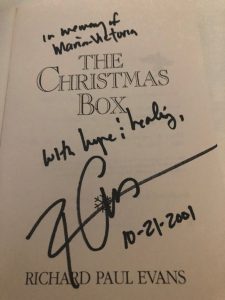
I had forgotten until I opened the first page of this book that it had been autographed by the author at the dedication to a beautiful angel statue in Atlanta, Georgia which was surrounded by engraved bricks honoring children who had died. Maria-Victoria has a brick there that says: Love and Joy.
So now you know what the first gift of Christmas was:
